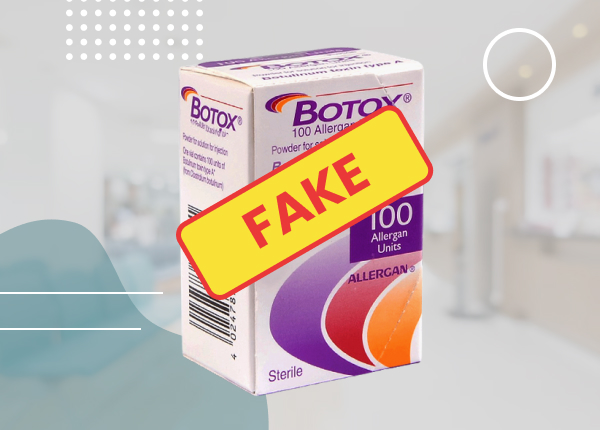Botox injections are among the most popular solutions for dynamic lines and wrinkles correction. It’s meant to be administered into facial muscles directly to pause muscle spasms, thus relaxing the area and providing a person with younger-looking skin. In order for cosmetic procedures to be safe and provide desired results, using high-quality Botox is a must.
But how do you understand when you have counterfeit products before you? Is there a way to recognize bad Botox? Today, we’ll tell you all the essentials so you have a better understanding of this vital topic.
How to Recognize Counterfeit Botox?
When you use Botox for either medical or cosmetic purposes, checking the vial before injection is vital to ensure the product is safe. Here are a few important characteristics you should keep in mind to provide patients with a secure customer experience:
- Pay attention to the box. If the description is not written in English, you see “botulinum toxin type A’ written instead of “OnabotulinumtoxinA,” and the vial states it contains 150 units of product – it’s probably counterfeit;
- The packaging. If it’s damaged or not sealed, there’s a chance something was done to it. Be careful and check the vial with more attention if you notice this issue;
- The visuals. If the solution in the vial seems discolored and misty and contains particles that shouldn’t be present there, it may point out that the injection is not of decent quality. Don’t use it on your patients if you notice anything mentioned here.
In order to find good Botox, you must look for a reliable supplier with high-quality products. This is the only way to provide your clients with a safe experience.
Potential Harmful Reactions
Experiencing side effects after receiving injections is normal and natural: some people have sensitive skin, and some react to the needle involved in the process. However, some people reported harmful reactions after using counterfeit Botox. These must be known and reported to a specialist to ensure a person is safe and won’t experience any worsening in their situation:
- Blurred or double vision and dizziness;
- Lumps under the skin;
- Allergic reactions (difficulty swallowing, swollen tongue, trouble breathing);
- Muscle droopiness;
- Botulism poisoning (must be treated with botulism antitoxin);
- Partial paralysis of the treated zone or close to it.
Medical care must be sought immediately if any of these are noticed after the treatment. There is a chance it’ll be a false alarm, but it’s better for a specialist to take a closer look and ensure nothing threatens an individual.
Supplier Matters: How to Spot a Fraud?
Now that we covered the visuals and main adverse effects, let’s discuss how not to become a victim of online scammers. Unfortunately, there are plenty of those on the Internet, so knowing how to detect them is quite useful. Here’s what you should keep in mind:
- Pay attention to the designs and usability. Reliable companies invest in their customers’ comfort and try to improve every aspect of their experience. Scammers, on the other hand, typically create dozens of websites and don’t pay much attention to usability because chances are, they can be blocked quite fast for their illegal actions. The high-quality supplier provides an excellent experience – that’s your first clue;
- Don’t buy cheap products. A low price doesn’t mean a good offer. Sometimes, scammers try to lure naive people by offering prices that are just too good to be true. Low price may be a warning sign;
- Avoid websites that don’t ask for your qualifications. Botox can only be used by board-certified specialists, so doctors, physicians and physician assistant, trained nurse, etc. If you are not asked to prove your experience, that’s probably a scam that tries to sell Botox to anyone;
- Check out reviews. Don’t underestimate the power of feedback. Many people talk about their experiences online, and websites like PharmaReview are meant to help you avoid scammers and ensure you only buy high-quality and safe products for your patients. You may also share your experience to warn others or, on the contrary, tell your colleagues about positive experiences you’ve had with a supplier.

